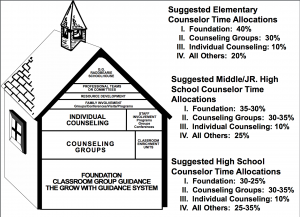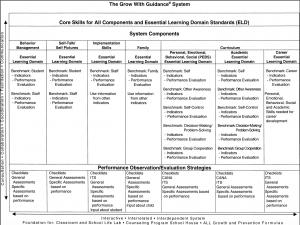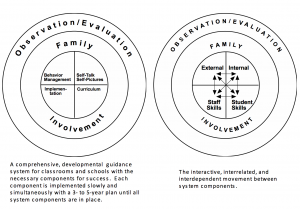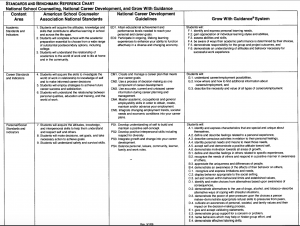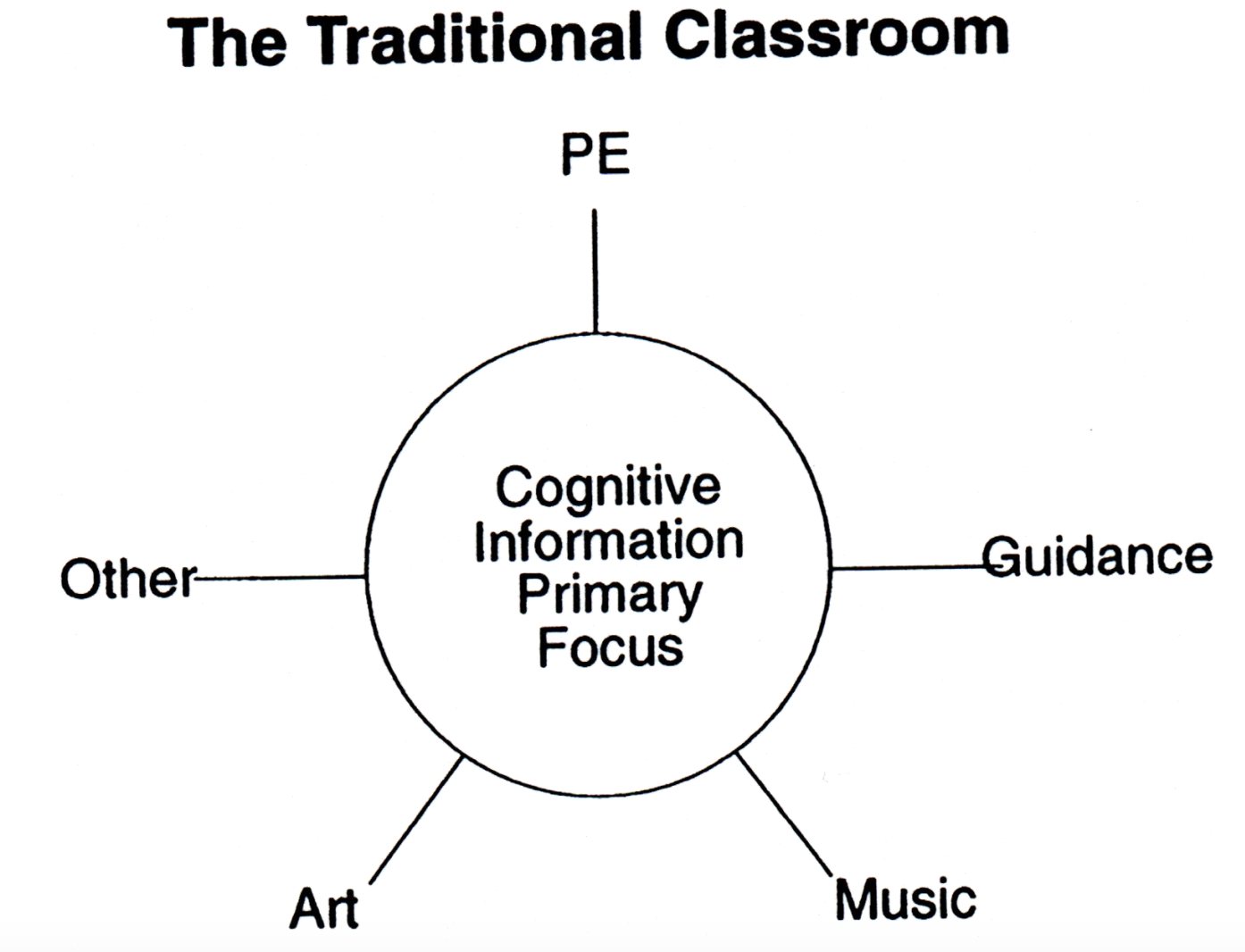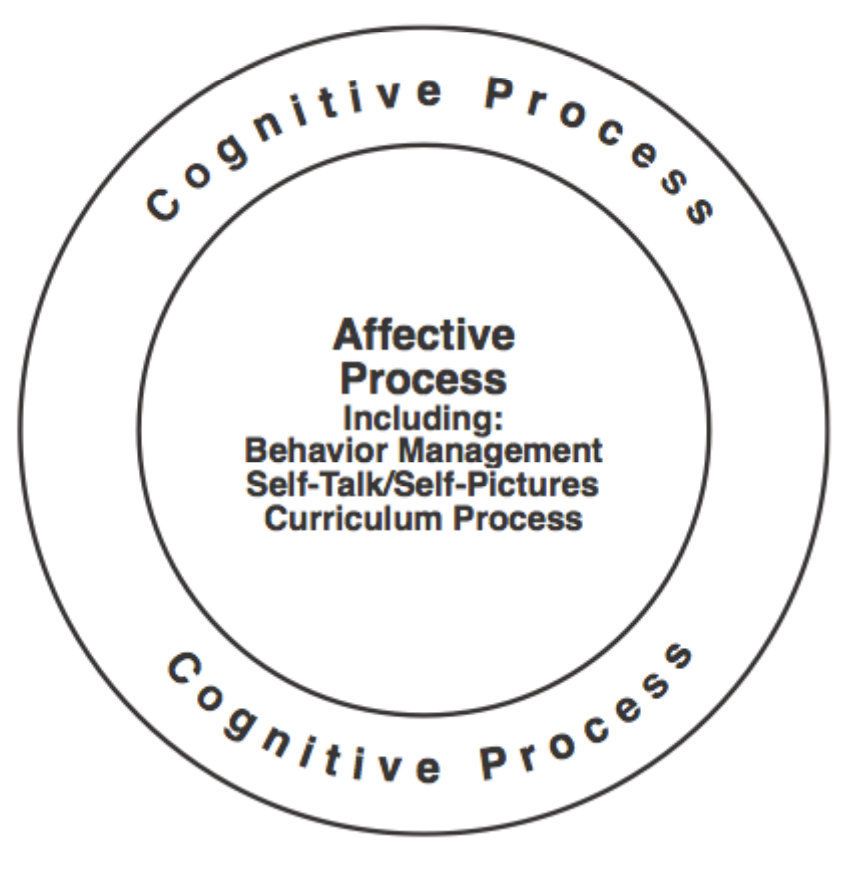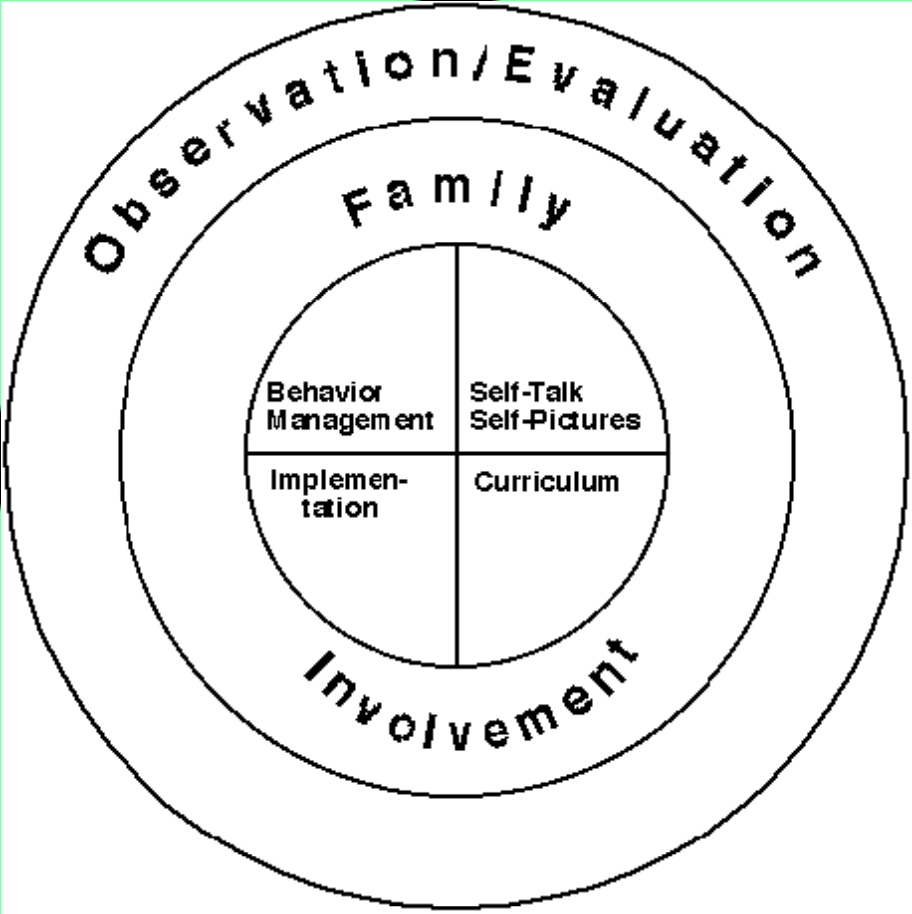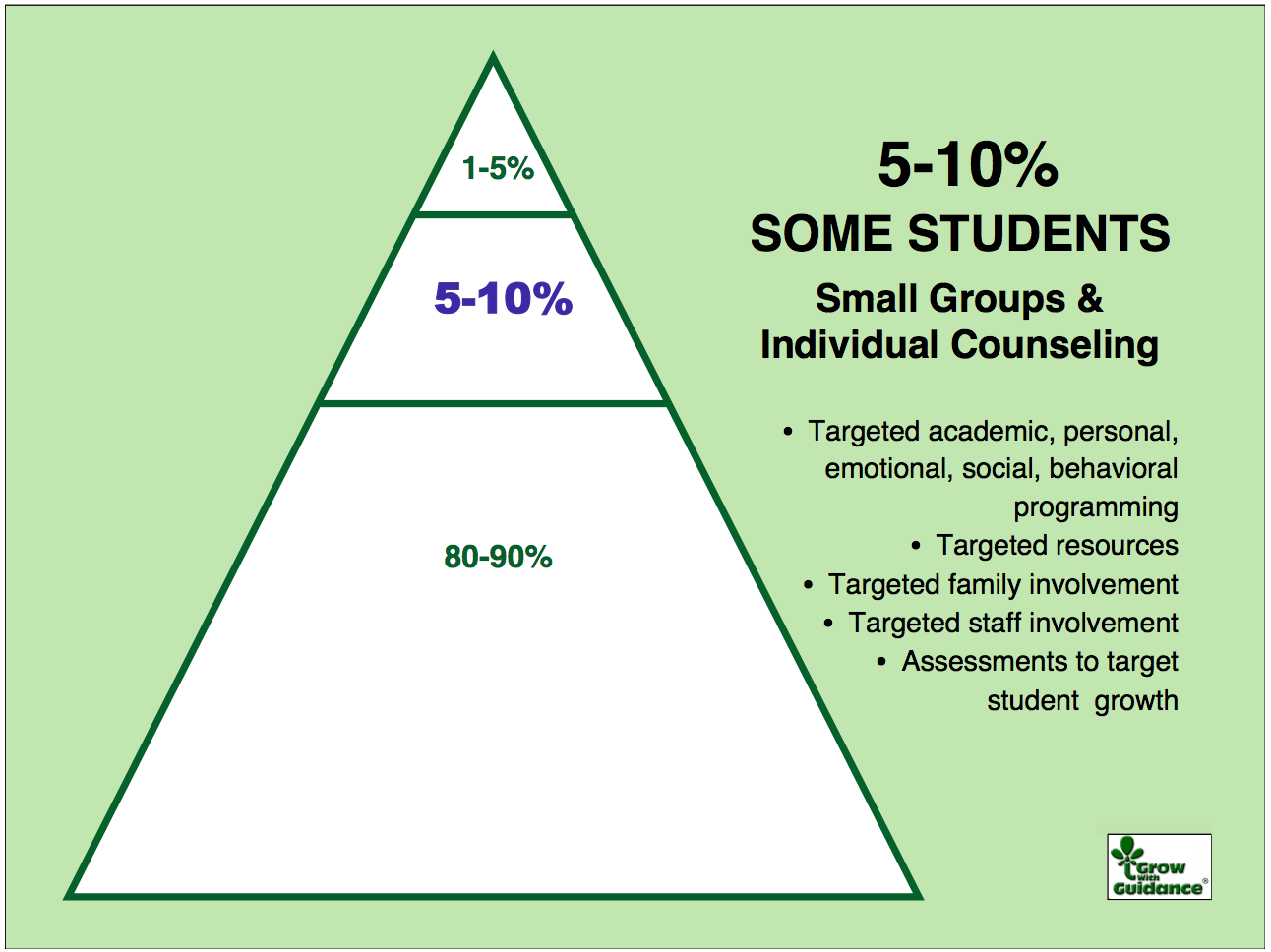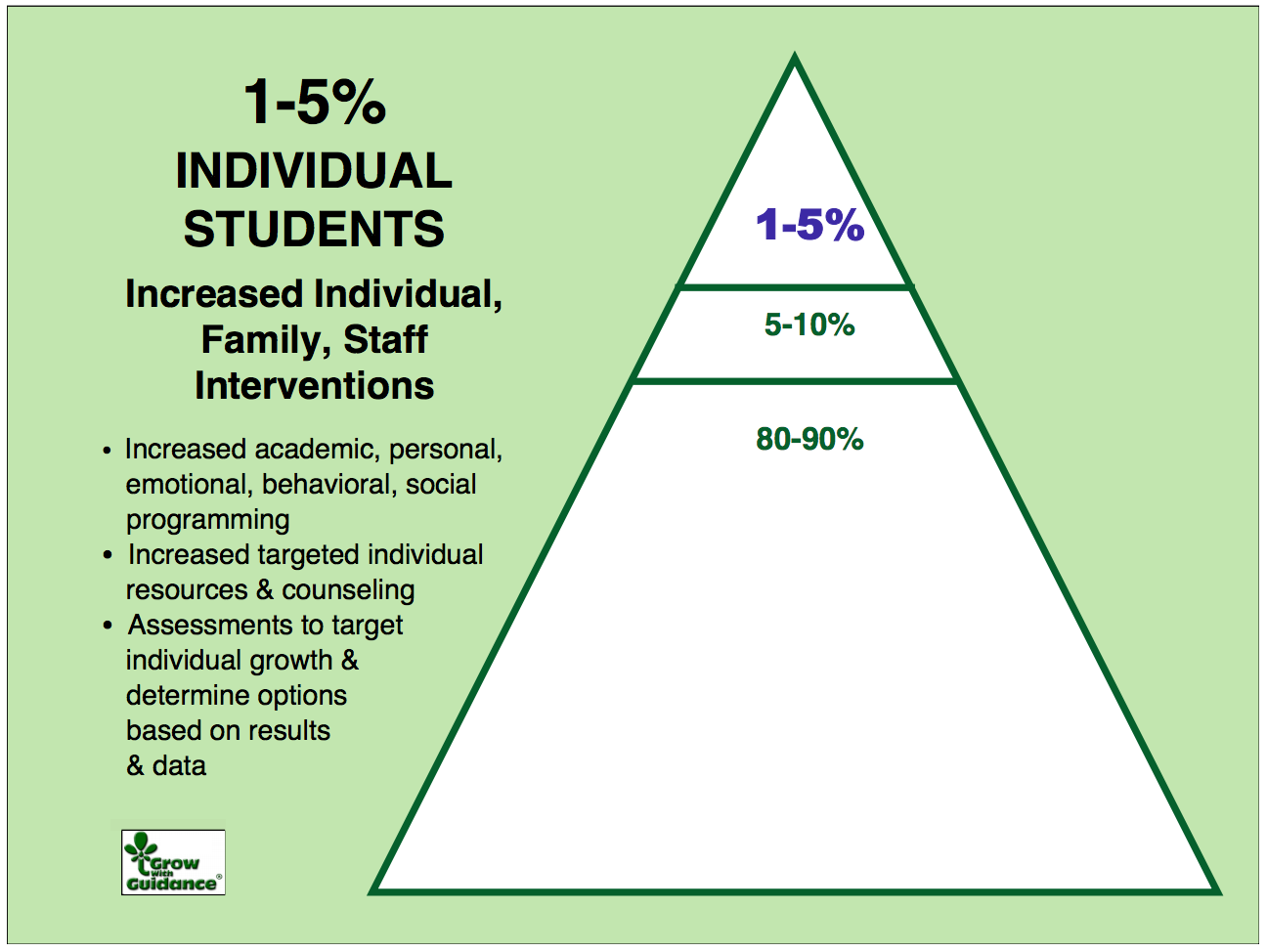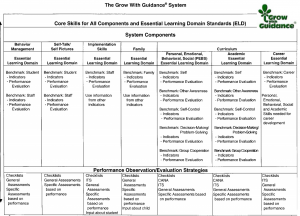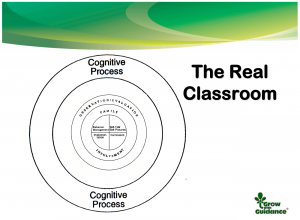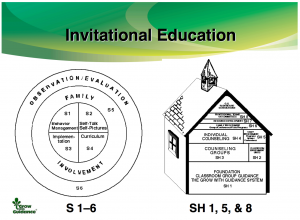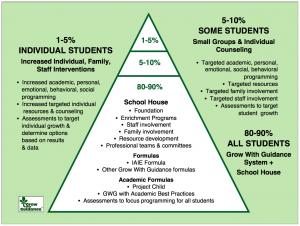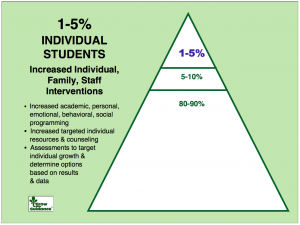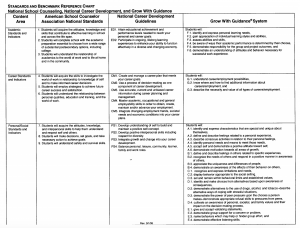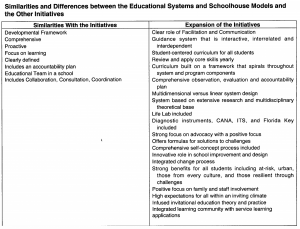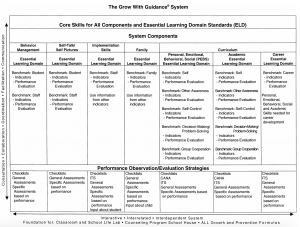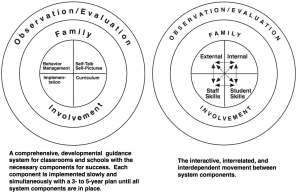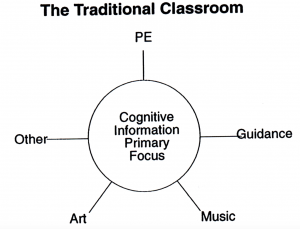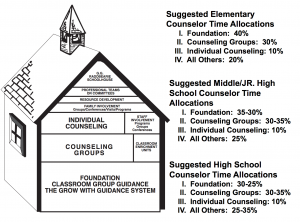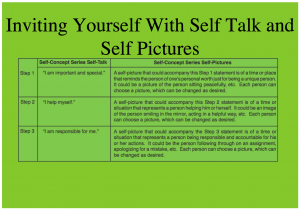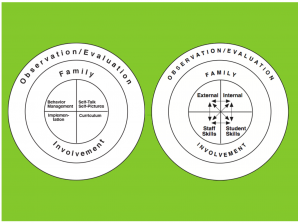Invite The Whole Child – Create An Inviting School – A Formula For Success
IAIE World Conference October 16 & 17 , 2019
Embassy Suites by Hilton Columbus Airport Columbus, Ohio
Tommie Radd, PhD, LPC, NSCC, NBCC,CRC: Consultant
Contact information for additional questions:
Dr. Radd, 614-607-1373; email: [email protected]; web site:
www.allsucceed.com
To reach the goals of invitational education, conscious and intentional plans need to be in place and the process to support and maintain an inviting school needs to be a central focus. These goals are too important to leave to chance. – Tommie R. Radd, PhD
Invite The Whole Child – Create An Inviting School –
A Formula For Success
Agenda
- Introduction and Workshop Overview – Self Concept, Perceptual Psychology
- An Overview of Guidance System Components and Checklist – Key to an
Inviting Classroom:- Behavior Management (extrinsic)
- Self-Talk/Self Pictures (intrinsic)
- Curriculum (student skills)
- Implementation (staff skills)
- Family Involvement
- Observation/Evaluation
- Life Lab – The Heart of the Real Classroom
- An Overview of System Inviting Formula including the ITS and CANA
- Activity and Ideas for Implementation
- Questions & Closing

Invitational Education:
Theory of Practice based on Democratic Ethos Perceptual Tradition Self-Concept Theory The whole is equal to more than the sum of its parts. —Tommie R. Radd, PhD
Overview of a Guidance System
- Behavior Management – Extrinsic – what we say and do
- Self-Talk & Self-Pictures – Intrinsic – what we say and believe with what we think and feel
- Curriculum – Student Skills
- Implementation – Staff Skills
- Family Involvement – Family Skills
- Observation/Evaluation
System Components Implemented
- Congruent
- Systemic – identify all components of the System or whole and understand the relationship between components
- Slowly and simultaneously
- 3-5 year process
- The Whole is larger than the sum of the parts
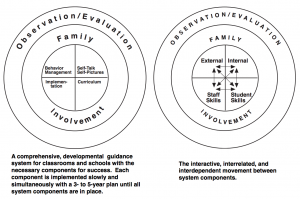
The Self-Concept Series is taught to all students
- All are important and valuable no matter what they think, say, feel, and do.
- All show they are remembering their worth by making helpful choices toward themselves and others. They are responsible for helping not hurting self and others.
- All are responsible for their choices. This accountability empowers all to make improvements because of their worth.
NOTE: See Pod Cast at www.allsucceed.com
Life Lab
A way of defining the classroom as a simulation in which students, pre-K-12 and beyond, learn, experience, and apply the essential skills needed for life; the comprehensive developmental guidance system creates a life lab in every classroom through which students develop a conscious and intentional frame of reference that can be applied throughout life.

Invitational Education Formula
The Guidance System, Staff Involvement, Professional Teams or Committees
A Conscious and Intentional Plan with the skills and processes needed for a winning invitational education program.
A Life Lab of experiences needed for post-school success.
Students can develop their spirit, purpose, and potential when
- there is a plan for change that is an integral part of the day-to-day operation of a school
- there is a conscious plan to support the self-concept
development of all within a school - the perception of students, staff, and families
regarding school relationships, procedures, and
policies is communicated and modified when it is
destructive - personal, social, emotional, and behavioral skills are taught
- students provide ongoing feedback to educators as to their day-to-day experiences in school, and
- there is an intentional process for consciously creating an inviting environment for all students.
GWG Assessments Self-Concept Series Resources
- ITS
- CANA
- Florida Key
- Self-Concept Series
- ISS (see IAIE Web Site)
- Other System Assessment
Invitational Teaching Survey (ITS)
A 43-question diagnostic class climate assessment, taken by students, which gives student input about their classroom experiences and whether they have a feeling of being “invited”; a diagnostic tool to involve students and get their input on ways to improve climate and school relationships; one indicator of ways to support staff growth experiences and plans; one way to observe and evaluate change at the end of a school year through pre-post assessment; the school climate assessment included in The Grow With Guidance® System.
Children’s Affect Needs Assessment (CANA)
A 42-question diagnostic curriculum assessment taken by students that provides student input into their classroom guidance curriculum activity selection; a diagnostic tool to involve students and create a sense of student ownership for guidance skill implementation and change (Note: ownership occurs when students “own” a problem and admit, recognize, and acknowledge personal needs and challenges that support assuming responsibility and commitment for change); assessment questions asked in the five essential learning strands of the curriculum of The Grow With Guidance® System; one way to observe and evaluate change at the end of the school year through pre-post assessment; the student curriculum assessment included in The Grow With Guidance® System.
Your Action Plan
- List 3 ways you can implement the strategies for yourself! Starting with YOU helps you to feel more comfortable with helping others!
- Brainstorm 3 ways you can incorporate a plan for your school based on the System and Schoolhouse Information.
- Explain how the practices and strategies address creating a conscious and intentional inviting climate for you, your school community.
-
References
Radd, T. R. (2014). Teaching and Counseling for Today’s World: Pre-K-12 & Beyond Second Edition. Columbus, Ohio: Grow With Guidance. ISBN: 978-1-878317-58-2
Radd, T. R. (2014). Teaching and Counseling for Today’s World: Pre-K-12 & Beyond Second Edition, e-book. Columbus, Ohio: Grow With Guidance. ISBN: 978-1-878317-61-2
Radd, T. R. (2007). The Grow With Guidance System Manual Third Edition. Omaha, Nebraska: Grow With Guidance. ISBN: 978-1-878317-53-7 (1-878317-53-9).
Radd, T. R. (2014). The Grow With Guidance System Manual Third Edition, e-book. Columbus, Ohio: Grow With Guidance. ISBN: 978-1-878317-59-9
Radd, T. R. (2007). The Grow With Guidance Primary Level Third Edition. Omaha, Nebraska: Grow With Guidance. ISBN: 978-1-878317-54-4 (1-878317-54-7).
Radd, T. R. (2014). The Grow With Guidance Primary Level Third Edition, e-book. Columbus, Ohio: Grow With Guidance. ISBN: 978-1-878317-60-5
Radd, T. R. (2007). The Grow With Guidance Intermediate Level Third Edition. Omaha, Nebraska: Grow With Guidance. ISBN: 978-1-878317-55-1 (1-878317-55-5).
Radd, T. R. (2014). The Grow With Guidance System Intermediate Level Third Edition, e-book. Columbus, Ohio: Grow With Guidance. ISBN: 978-1-878317- 62-8
Radd, T. R. (2007). The Grow With Guidance Middle School Level Third Edition. Omaha, Nebraska: Grow With Guidance. ISBN: 978-1-878317-56-8 (1-878317-56-3).
Radd, T. R. (2014). The Grow With Guidance Middle School Level Third Edition, e-book. Columbus, Ohio: Grow With Guidance. ISBN: 978-1-878317-63-6
Radd, T. R. (2007). The Grow With Guidance High School Level Third Edition. Omaha, Nebraska: Grow With Guidance. ISBN: 978-1-878317-57-5 (1-878317-57-1)
Radd, T. R. (2014). The Grow With Guidance High School Level Third Edition, e-book. Columbus, Ohio: Grow With Guidance. ISBN: 978-1-878317-64-4 References
Radd, T. R. (2006). Classroom Activities for Teachers, Counselors, and Other Helping Professionals Pre-K–12 & Beyond Vol. I. Omaha, Nebraska: Grow With Guidance. ISBN: 1-878317-45-8
Radd, T. R. (2014). Classroom Activities for Teachers, Counselors, and Other Helping Professionals: Pre-K-12 & Beyond Vol I. Second Edition, e-book. Columbus, Ohio: Grow With Guidance. ISBN: 1-878317-65-2
Radd, T. R. (2006). Classroom Activiites for Teachers, Counselors, and Other Helping Professionals Pre-K–12 & Beyond Vol. II Omaha, Nebraska: Grow With Guidance. ISBN: 1-878317-46-6
Radd, T. R. (2014). Classroom Activities for Teachers, Counselors, and Other Helping Professionals: Pre-K-12 & Beyond Vol II Second Edition, e-book. Columbus, Ohio: Grow With Guidance. ISBN: 1-878317-65-
Radd, T. R. (2014). The Grow With Guidance System Music: G. G. Raddbearie Sings, e-book. Columbus, Ohio: Grow With Guidance. ISBN: 978-1-878317-68-7
Radd, T. R. (2007). The Grow With Guidance® System Music: G.G. Raddbearie Sings. Omaha, Nebraska: Grow With Guidance. isbn: 978-1-878317-47-6 (1-878317-47-4).
Radd, T. R. (2014). The Grow With Guidance System Fun Game Second Edition, e-book. Columbus, Ohio: Grow With Guidance. ISBN: 978-1-878317-67-9
Radd, T. R. (2007). The Grow With Guidance® System F.U.N. Game, Second Edition. Omaha, Nebraska: Grow With Guidance. ISBN: 978-1-878317-49-0 (1-878317-49-0)
Radd, T. R. (2006). The History, Development, and Research of the Educational Systems Model: The Grow With Guidance® System. Omaha, Nebraska: Grow With Guidance. isbn: 978-1-878317- 52-0 (1-878317-52-0).
A complete Research Report is available here.

